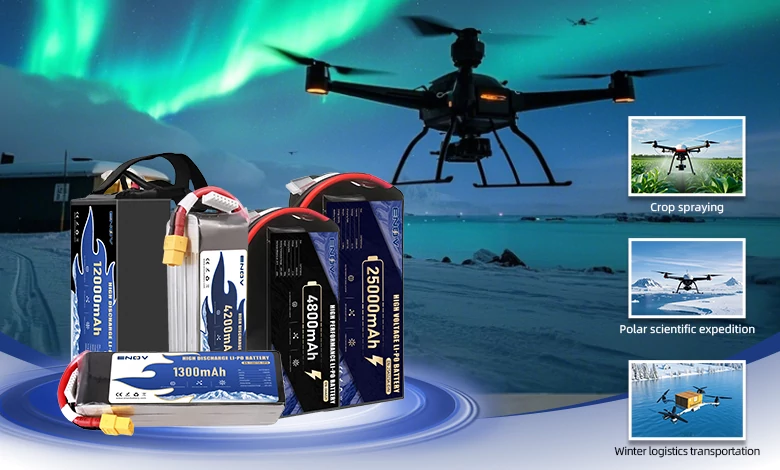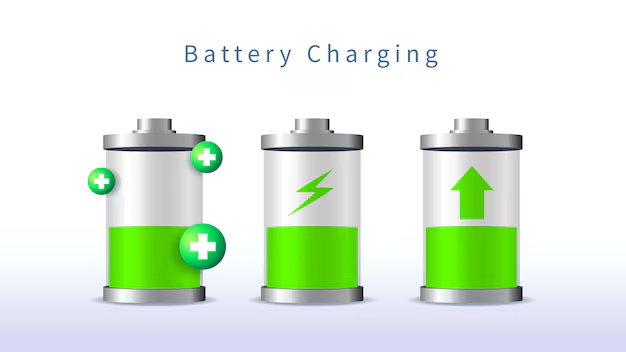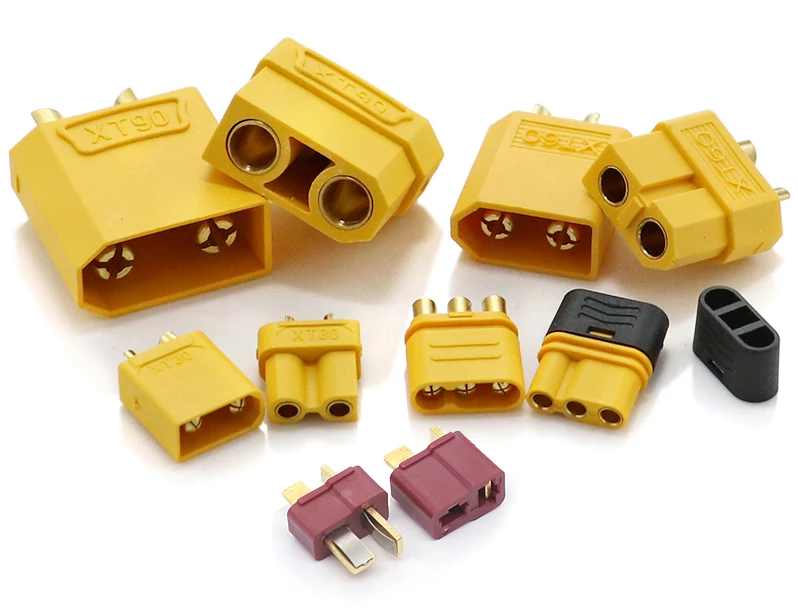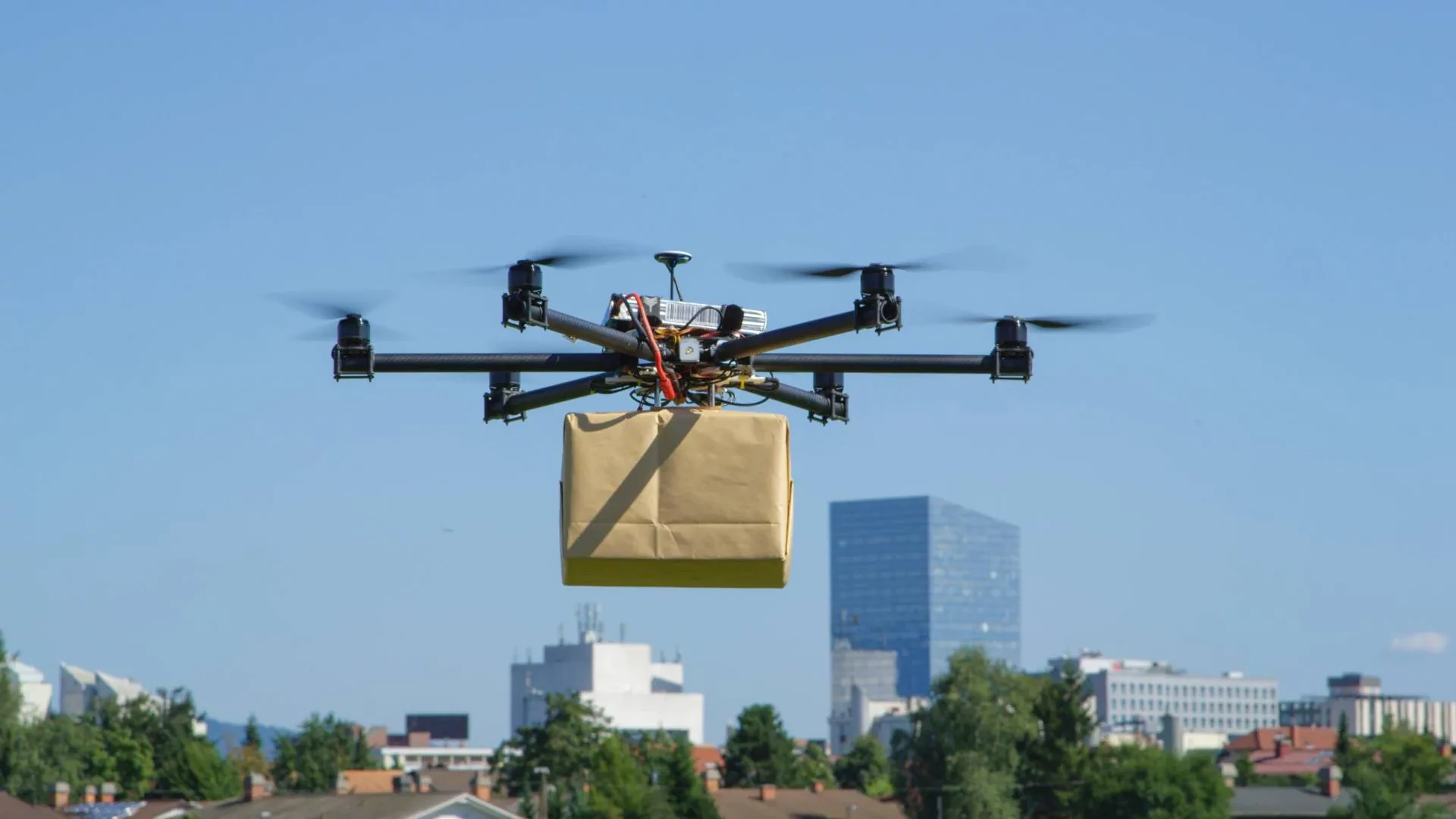Comprehensive Analysis of Drone Battery Internal Resistance: From Principles to Practical Maintenance

ENOV High-Energy drone batteries power industrial and commercial drones. Delivering 220–320 Wh/kg energy density, they enable long flight times (30+ mins) and support fast charging (2C). Perfect for aerial photography, surveillance, and delivery drones.
The internal resistance of a drone battery is a core indicator that determines the battery’s performance, health status, and flight safety. It is directly related to discharge efficiency, heat generation, and service life. This article will systematically and in detail break down the internal resistance from the dimensions of basic concepts, influencing factors, measurement methods, specific effects on drones, and maintenance strategies, providing drone users with a comprehensive understanding of internal resistance and a practical guide.
1. Core Concept of Internal Resistance: Definition and Composition
Internal resistance refers to the resistance to current flow inside a battery, measured in milliohms (mΩ). It mainly consists of two types, which together determine the overall internal resistance level of the battery:
• Ohmic Internal Resistance: A fixed resistance determined by the battery’s physical structure, including the resistance of the electrode materials themselves, the resistance of the electrolyte when conducting ions, the resistance of the separator, and the resistance at the contact interface between the positive and negative electrodes and the electrolyte. As long as the battery structure remains unchanged, the ohmic internal resistance always exists.
• Polarization Internal Resistance: A temporary resistance generated due to electrochemical reactions only during the charging and discharging process, which includes two forms. One is electrochemical polarization: the speed of the electrochemical reaction cannot keep up with the speed of current change, leading to the accumulation of charges on the electrode surface and the formation of resistance. The other is concentration polarization: there is a difference in ion concentration between the electrolyte near the electrode and the inside, which hinders ion migration and forms resistance. After charging or discharging stops, the polarization internal resistance will gradually disappear.
2. Key Factors Affecting Internal Resistance
The internal resistance of a drone battery is not a fixed value and changes dynamically with various factors. Different factors affect the internal resistance to varying degrees by altering the battery’s internal structure or the state of electrochemical reactions:
2.1 Battery Type and Specifications
• Type Difference: The internal resistance of lithium-polymer (LiPo) batteries is much lower than that of nickel-metal hydride (Ni-MH) batteries and nickel-cadmium (Ni-Cd) batteries, which is one of the important reasons why LiPo batteries are currently the mainstream choice for drones. The internal resistance of lithium-ion (Li-ion) batteries is slightly higher than that of LiPo batteries, but they have a higher energy density, making them suitable for long-endurance drones.
• Specification Impact: Among batteries of the same type, the larger the capacity and the higher the discharge rate (e.g., 25C, 50C), the lower the internal resistance usually is. High-rate and large-capacity batteries have better electrode materials and electrolyte processes, which can reduce the resistance during current conduction.
•Number of Usage Cycles (Cycle Life): Each charge-discharge cycle causes minor damage to the battery. The electrode materials will gradually suffer micro-damage, and the electrolyte will age slowly, leading to the continuous accumulation and increase of ohmic internal resistance and polarization internal resistance. Generally, after 100 cycles, the internal resistance will increase by 20%-50%, and the more cycles there are, the more obvious the increase in internal resistance will be.
2.2 Charging and Discharging Methods
• Overcharging and Over-Discharging: When the voltage of a single cell exceeds 4.2V (overcharging), crystallization will occur on the electrode, damaging the internal structure and causing a sharp increase in internal resistance. When the voltage is lower than 3.0V (over-discharging), irreversible damage will be caused to the active material of the electrode, leading to a permanent increase in internal resistance.
• High-Current Charging and Discharging: High-current fast charging or discharging will intensify the polarization reaction, causing the internal resistance to rise rapidly in the short term, and accelerating battery aging in the long term, further increasing the internal resistance.
2.3 Storage Environment
• Temperature Impact: When the ambient temperature is higher than 40°C, it will accelerate the decomposition of the electrolyte and the corrosion of the electrodes, leading to a rapid increase in internal resistance. When the temperature is lower than 0°C, the viscosity of the electrolyte increases, and the ion conduction speed slows down, resulting in a temporary increase in internal resistance. Part of the internal resistance can be reversed when the temperature is restored, but long-term low-temperature storage will still cause damage to the battery.
• State of Charge: Long-term storage at full charge is likely to cause the growth of lithium dendrites, which pierce the separator and damage the battery structure. Long-term storage at empty charge is likely to cause electrode passivation. Both will lead to an irreversible increase in internal resistance. The ideal state of charge for long-term storage is 40%-60%.
• Physical Damage: Physical impacts such as collision, drop, and puncture on the battery may cause problems such as bulging (gas generated by electrolyte decomposition), shell rupture, or poor electrode contact, directly damaging the internal structure and causing a “jump”-style increase in internal resistance. The internal resistance increased due to physical damage cannot be repaired.
3. Methods for Measuring Internal Resistance
Measuring the internal resistance of a drone battery requires professional tools. Different measurement methods vary in principles, advantages, disadvantages, and applicable scenarios, and users can choose according to their needs:
3.1 Measurement with a Dedicated Internal Resistance Tester
• Principle: Inject a small current of 100-500mA into the battery. According to Ohm’s Law, the internal resistance is calculated by measuring the voltage drop generated when the current flows through the battery (R = U/I). Common devices include Hioki BT3563, IMAX B6, ZTW battery detectors, etc.
• Advantages: High measurement accuracy, with an error usually within ±1mΩ, simple and convenient operation. Some devices can also measure the battery voltage and capacity at the same time to obtain more information about the battery state.
• Disadvantages: An additional device needs to be purchased, with a cost ranging from 50 to 500 yuan.
• Applicable Scenarios: Daily battery maintenance and accurate detection of battery health, suitable for users with high requirements for battery performance, such as racing drone players and professional aerial photographers.
3.2 Measurement with Charger-Integrated Function
• Principle: Before charging, some intelligent chargers (such as DJI intelligent chargers and iCharger) will automatically inject a detection current into the battery, calculate the internal resistance by the relationship between the current and the voltage drop, and display the result on the charger screen or the supporting APP.
• Advantages: No additional tools need to be purchased, it is integrated with the charging function, easy to use, and no additional operation steps are required.
• Disadvantages: Low measurement accuracy, with an error of about ±5mΩ, and it usually only supports adapted brand batteries (such as original DJI batteries), with limited compatibility.
• Applicable Scenarios: Brand drone users can quickly judge the battery internal resistance in daily use when accurate data is not required.
3.3 Discharge Test Method (Manual Calculation)
• Principle: First, record the no-load voltage (U0) of the battery, then connect a fixed load (such as a high-power LED) for discharge, and record the discharge current (I) and load voltage (U1) at the same time. Finally, calculate the internal resistance manually using the formula R = (U0-U1)/I.
• Advantages: No dedicated tools are needed, the principle is intuitive, and existing equipment can be used for temporary measurement.
• Disadvantages: Low accuracy, greatly affected by the stability of the load, manual recording of data and calculation are required, and the discharge process will consume the battery power. Frequent use may damage the battery.
• Applicable Scenarios: Roughly judging the internal resistance in emergency situations, not suitable for daily routine measurement.
4. Specific Effects of Internal Resistance on Drones
Minor changes in internal resistance will be directly reflected in the flight performance and safety of the drone, mainly in four aspects:
4.1 Decreased Endurance
When the internal resistance increases, more electrical energy is consumed inside the battery during the discharge process. This energy is lost in the form of heat (calculation formula: Q = I²Rt, where Q is heat, I is current, R is internal resistance, and t is time), and the effective electrical energy actually output to the motor and flight controller decreases. For example, the internal resistance of a new drone battery is 10mΩ, and after 50 cycles, the internal resistance rises to 20mΩ. Under the same discharge current, the internal loss will double, and the endurance time may be reduced from 25 minutes to less than 20 minutes.
4.2 Insufficient Discharge Capacity, Affecting Flight Performance
When a drone takes off, hovers, flies at high speed, or resists wind, the battery needs to provide high-current discharge (the peak current of the motor can reach dozens of amperes). If the internal resistance is too large, according to I = ΔU/R (ΔU is the voltage difference between the battery and the load), the battery cannot provide sufficient current, which will lead to problems such as weak take-off even inability to lift off, unstable motor speed during hovering causing the fuselage to shake, “altitude drop” when flying at high speed or resisting wind, and delayed power response.
4.3 Severe Battery Heating, Causing Safety Risks
The larger the internal resistance, the higher the heat generation power during discharge (calculation formula: P = I²R, where P is heat generation power). For example, under a discharge current of 10A, the heat generation power of a battery with an internal resistance of 10mΩ is 1W, while that of a battery with an internal resistance of 30mΩ is 3W, and the temperature will rise significantly, possibly exceeding 60°C. High temperature will not only further accelerate battery aging but also may cause the battery to bulge, leak, and in severe cases, even catch fire.
4.4 Sudden Voltage Drop, Triggering Low-Voltage Protection
An increase in internal resistance will cause the “load voltage” of the battery to drop rapidly (U_load = U_nominal-I×R, where U_nominal is the nominal voltage of the battery). Taking a 3S LiPo battery as an example, its nominal voltage is 11.1V (3.7V per cell). During high-current discharge, a battery with high internal resistance may have a voltage that drops sharply below 9.0V (3.0V per cell, the low-voltage protection threshold), triggering the forced landing of the drone and posing a risk of crash.
5. Internal Resistance Maintenance and Battery Replacement Strategy
Reasonable maintenance can slow down the growth rate of internal resistance, and at the same time, the judgment criteria for battery replacement should be clarified to ensure flight safety and performance:
5.1 Maintenance Tips to Slow Down the Growth of Internal Resistance
• Standardize Charging and Discharging: Use the original or adapted charger to avoid overcharging (the voltage of a single cell does not exceed 4.2V) and over-discharging (the voltage of a single cell does not drop below 3.0V). Control the charging current between 0.5C and 1C (for example, a 5000mAh battery is charged with a current of 2.5A-5A) to avoid high-current fast charging. After the flight, wait for the battery to cool down to room temperature (below 35°C) before charging to prevent high-temperature charging from accelerating the increase in internal resistance.
• Store Correctly: When the battery is not in use for a long time (more than 1 week), charge it to the storage voltage (3.8-3.85V per cell, about 11.4-11.55V for a 3S battery). Control the storage environment temperature between 10-25°C, avoid direct sunlight and proximity to heat sources (such as routers and radiators) to prevent high temperature from accelerating the decomposition of the electrolyte.
• Avoid Physical Damage: When flying, be careful to avoid obstacles to prevent the battery from colliding, falling, etc. When storing, use a dedicated battery box to fix the battery to avoid extrusion. If the battery is found to be bulging, leaking, or with a damaged shell, stop using it immediately to prevent further increase in internal resistance.
5.2 Judgment Criteria for Battery Replacement
• Internal Resistance Threshold: The internal resistance of a new single-cell LiPo battery is usually ≤20mΩ (≤15mΩ for high-rate batteries). When the internal resistance of a single cell exceeds 30-40mΩ, or doubles compared with that of a new battery, the battery needs to be replaced. For multi-cell battery packs (such as 3S, 4S), if the internal resistance difference between each cell exceeds 5-10mΩ, even if a single cell does not exceed the threshold, the battery pack still needs to be replaced to avoid overcharging or over-discharging of some cells due to unbalanced internal resistance.
• Auxiliary Judgment Indicators: The endurance time is reduced by more than 30% compared with that of a new battery; the battery heats up significantly during flight and feels hot to the touch; it is fully charged quickly during charging but the voltage drops sharply during discharging; the battery has physical damage such as bulging, leaking, or deformation. If any of the above situations occurs, the battery should be replaced in a timely manner.
6. Internal Resistance Reference and Precautions for Battery Purchase
When purchasing a drone battery, internal resistance should be taken as an important reference indicator, and other details should also be paid attention to to avoid buying products with poor performance or potential safety hazards:
6.1 Internal Resistance Reference Standards
• Single-Cell Battery: The internal resistance of a new high-quality LiPo battery should be less than 10mΩ, and that of a high-performance battery can even be as low as 2-5mΩ. For Li-ion batteries commonly used in long-endurance drones, the internal resistance of a single cell is slightly higher, but it should also be controlled within a reasonable range to avoid affecting the endurance.
• Battery Pack: The total internal resistance (including welding and wire impedance) of the entire battery pack (such as a 6S1P 22.2V high-voltage battery pack) should be ≤25mΩ, and the internal resistance difference between each cell in the pack should be ≤1mΩ, and the voltage difference should be ≤5mV to prevent the unbalanced performance of the cells from dragging down the performance of the entire battery pack.
6.2 Precautions for Purchase
• Pay Attention to the Consistency of Batch Internal Resistance: When buying multiple batteries, try to choose products from the same batch, and compare the internal resistance of different batteries to ensure good consistency of internal resistance, so as to avoid unstable flight performance due to large differences in internal resistance.
• Choose According to Usage Scenarios: Multi-rotor drones are sensitive to battery internal resistance (requiring high-rate discharge), so batteries with lower internal resistance should be selected. Fixed-wing or long-endurance drones have lower requirements for discharge rate, so the internal resistance requirement can be appropriately relaxed, but it still needs to be within a reasonable range.
7. Conclusion
The internal resistance of a drone battery is a “barometer” reflecting the battery’s health status. From battery purchase to daily use and maintenance, attention should be paid to changes in internal resistance. A battery with low internal resistance can provide better discharge efficiency, longer endurance time, and a safer flight experience. An increase in internal resistance indicates the degradation of battery performance, and timely maintenance measures or battery replacement are required. By regularly measuring the internal resistance with dedicated equipment and following standardized charging, discharging, and storage methods, the growth of internal resistance can be effectively slowed down, the service life of the battery can be prolonged, and the flight safety and stable performance of the drone can be guaranteed.
Quick inquiry
Drop us a line, and we’ll get back to you within 24 hours.

Ariana Yuan
Digital Operations Manager
Website Planning|Marketing Project Management for Drone Batteries|Scheduled Content Refresh|SEO Optimization

Ariana Yuan
Digital Operations Manager
Website Planning|Marketing Project Management for Drone Batteries|Scheduled Content Refresh|SEO Optimization




